 |
||||||||||||||||||||||||||||||
|
HOME
|
US Navy -
ships
|
US Navy - air
units
|
USMC - air
units
|
International
Navies
|
Weapon Systems
|
Special Reports |
||||||||||||||||||||||||||||||
|
Israeli Navy - Sea Corps of Israel Dolphin class Submarine |
||||||||||||||||||||||||||||||
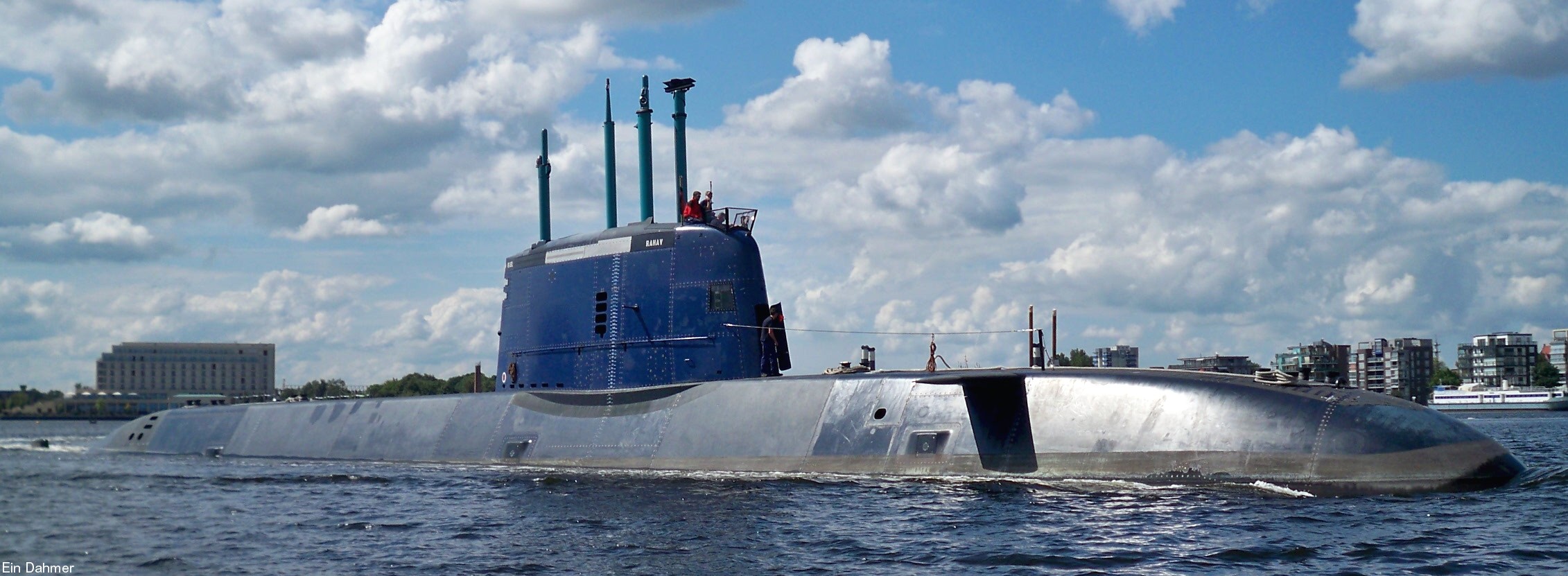 |
||||||||||||||||||||||||||||||
| 02/24 | ||||||||||||||||||||||||||||||
| Ships: | ||||||||||||||||||||||||||||||
|
||||||||||||||||||||||||||||||
| Specifications: | ||||||||||||||||||||||||||||||
|
Builder: Howaldtswerke-Deutsche Werft (HDW), Kiel, Germany in cooperation with Nordseewerke Emden GmbH (NSWE), Emden, Germany Displacement: Dolphin I: 1640 tons surfaced / 1900 tons submerged Dolphin II: 2050 tons surfaced / 2400 tons submerged Length: Dolphin I: 57.3 meters (188 feet) Dolphin II: 68.6 meters (225 ft) Beam: 6.8 m (22 ft) Draft: 6.2 m (20 ft) Speed: Dolphin I: 20 knots (37 km/h) / Dolphin II: 25+ knots (46+ km/h) Range: ? Complement: 35 / 50 Propulsion: Dolphin I: Diesel Electric 3 x MTU 16V 396 SE 84 diesel engine (3120 kW / 4243 hp, total) Dolphin II: Diesel Electric + AIP 3 x MTU 16V 396 SE 84 diesel engine (3120 kW / 4243 hp, total) Fuel-Cell AIP (air independent propulsion) System 1 shaft / 1 propeller
Systems: STN Atlas ISUS 90-55 combat system Atlas CSU 90 sonar |
||||||||||||||||||||||||||||||
|
The Dolphin class is a diesel-electric submarine developed in Israel
and constructed by Howaldtswerke-Deutsche Werft AG (HDW) in Kiel,
Germany, for the Israeli Navy. The first boats of the class were
based on the export-only German 209-class submarines, but modified
and enlarged. The Dolphin 1 sub-class is slightly larger than the
German Navy Type 212 in length and displacement. The three newer
air-independent propulsion (AIP) equipped boats are similar to the
Type 212 vessels in underwater endurance, but are 12 metres (39 ft)
longer, nearly 500 tonnes heavier in submerged displacement and have
a larger crew than either the Type 212 or the Type 214. The Dolphin 2 class submarines are the largest to have been built in Germany since World War II and the most expensive single vehicles in the Israel Defense Forces. The Dolphin class replaced the aging Gal class, which had served in the Israeli navy since the late 1970s. Each Dolphin-class submarine is capable of carrying a combined total of up to 16 torpedoes and Popeye Turbo submarine-launched cruise missiles (SLCMs). The cruise missiles have a range of at least 1,500 km (930 mi) and are widely believed to be equipped with a 200 kiloton nuclear warhead containing up to 6 kilograms (13 lb) of plutonium. The latter, if true, would provide Israel with an offshore nuclear second-strike capability. The first batch of the class - the three Dolphin-I submarines - are set to be replaced by the newer Dakar-class submarines from 2031 onwards. Each submarine is fitted with 6 x 533 mm (21.0 in) torpedo tubes, and 4 x 650 mm (26 in) torpedo tubes. The very large 650 mm tubes can be used for laying mines, larger submarine-launched cruise missiles, or swimmer delivery vehicles, and with liners the tubes could be used for standard torpedoes and submarine-launched missiles. The boats were first armed with Atlas Elektronik DM2A3 torpedoes using wire-guided active homing to deliver a 260 kg (570 lb) warhead at a maximum speed of 40 knots (74 km/h; 46 mph) to a target over 13 km (8.1 mi) away, in passive homing mode a speed of 22 knots (41 km/h; 25 mph) and a range up to 28 km (17 mi) is possible. Israel has also procured the more advanced DM2A4 torpedo, successor to their DM2A3s, which are electrically propelled, equipped with fiber optic communications and has countermeasure resistant signals processing and mission logic. A wet and dry compartment is installed for deploying underwater special operations teams. Jane's Defence Weekly reports that the Dolphin-class submarines are believed to be nuclear armed, offering Israel a sea-based, second strike capability. In adherence to Missile Technology Control Regime rules the US Clinton administration rejected an Israeli request in 2000 to purchase Tomahawk long range SLCMs. The U.S. Navy has deployed nuclear armed and conventional Tomahawk missiles for its submarine fleet which are launched from standard heavy 533 mm torpedo tubes. The Federation of American Scientists and GlobalSecurity.org report that the four larger torpedo tubes are capable of launching Israeli built nuclear-armed Popeye Turbo cruise missiles (a variant of the Popeye standoff missile), and the U.S. Navy recorded an Israeli submarine-launched cruise missile test in the Indian Ocean ranging 1,500 km (930 mi). The Dolphin class uses the ISUS 90-1 TCS weapon control system supplied by STN Atlas Elektronik, for automatic sensor management, fire control, navigation, and operations. The installed radar warning receiver is a 4CH(V)2 Timnex electronic support measures system, scanning from 5 GHz to 20 GHz frequency bands and able to pinpoint radar sites with accuracy between 5 and 10 degrees of angle (depending on frequency). The surface search radar is an Elta unit operating on I band. The sonar suite includes the advanced Atlas Elektronik CSU 90 hull-mounted passive and active search and attack sonar. The PRS-3 passive ranging sonar is also supplied by Atlas Elektronik, the flank array is a FAS-3 passive search sonar. A notable design feature is the prismatic hull cross-section and smoothly faired transitions from the hull to the sail, improving the boat's stealth characteristics. The ship and internal features are constructed of nonmagnetic materials, significantly reducing the chances of it being detected by magnetometers or setting off magnetic naval mines. The submarines have two Kollmorgen periscopes. The Dolphins can mount an external special forces hangar aft of their sail. The Dolphins are equipped with three V-16 396 SE 84 diesel engines built by MTU Friedrichshafen (now Tognum), developing 3.12 MW (4,180 hp) sustained power. The submarines are equipped with three Siemens 750 kW alternators, and a Siemens 2.85 MW sustained-power motor driving a single shaft. The propulsion system provides a speed of 20 knots (37 km/h; 23 mph) submerged and a snorkeling speed of 11 knots (20 km/h; 13 mph). The hull is rated for dives up to 350 m (1,150 ft). The maximum unrefuelled range is 8,000 nautical miles (15,000 km; 9,200 mi) traveling on the surface at 8 knots (15 km/h; 9.2 mph) and over 400 nautical miles (740 km; 460 mi) at 8 knots (15 km/h; 9.2 mph) submerged; they are designed to remain unsupplied for up to 30 days on station. source: wikipedia |
||||||||||||||||||||||||||||||
| images | ||||||||||||||||||||||||||||||
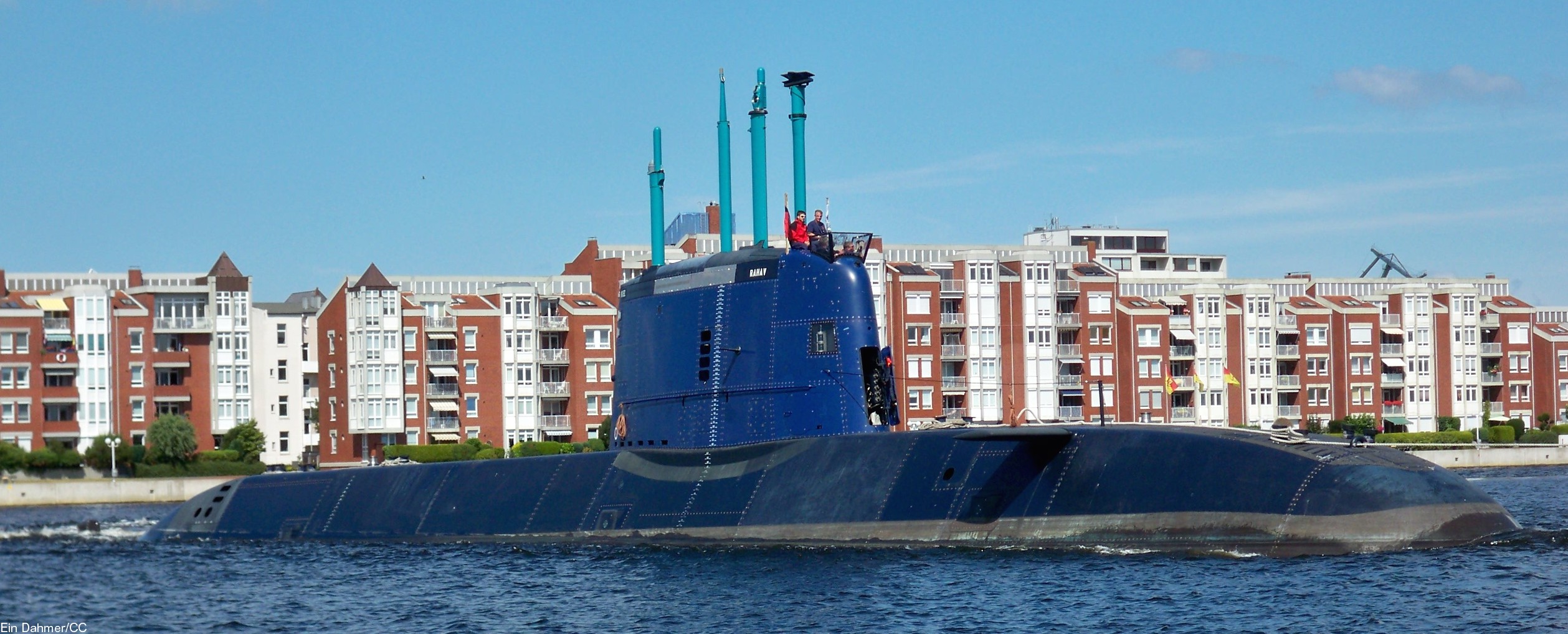 INS Rahav 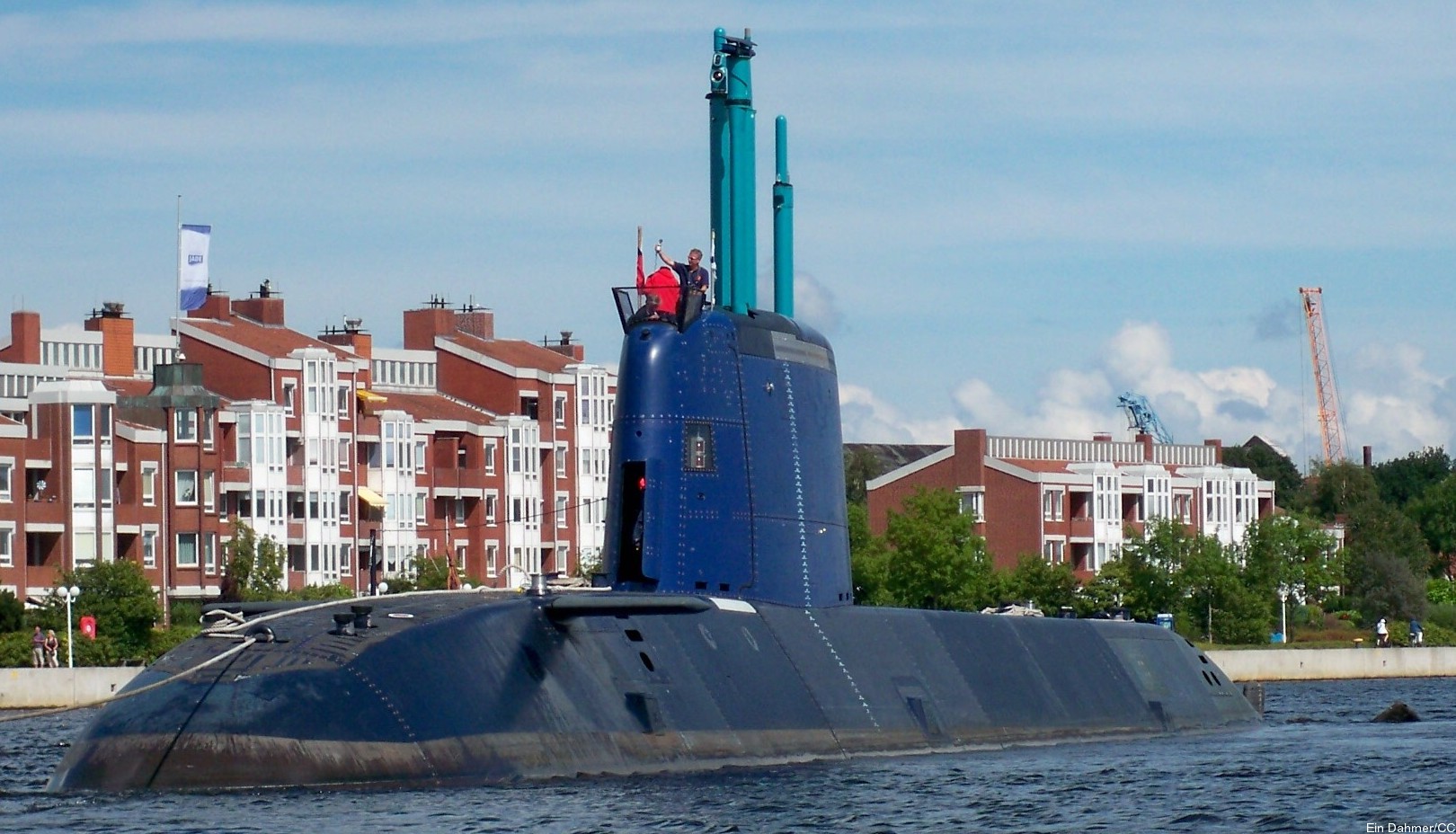 INS Rahav  INS Rahav 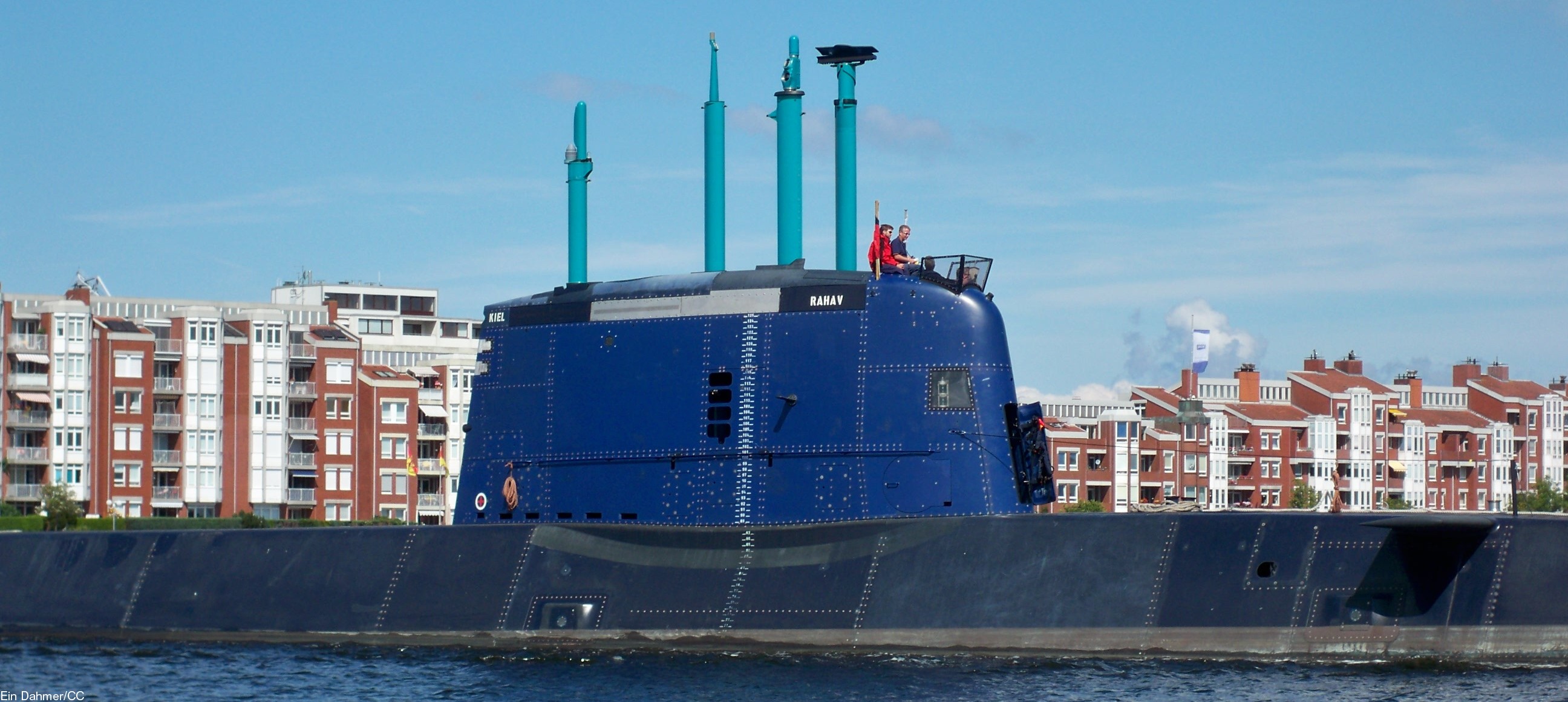 INS Rahav 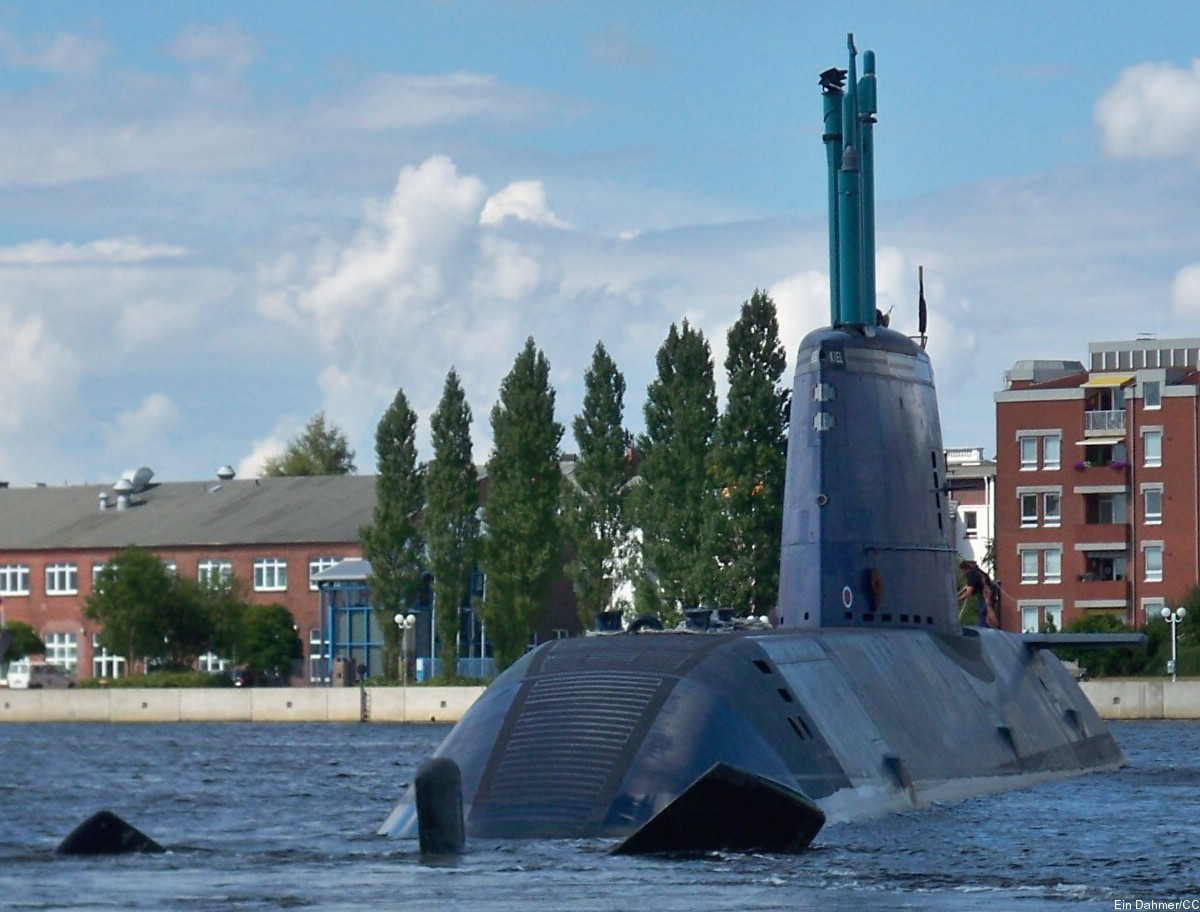 INS Rahav 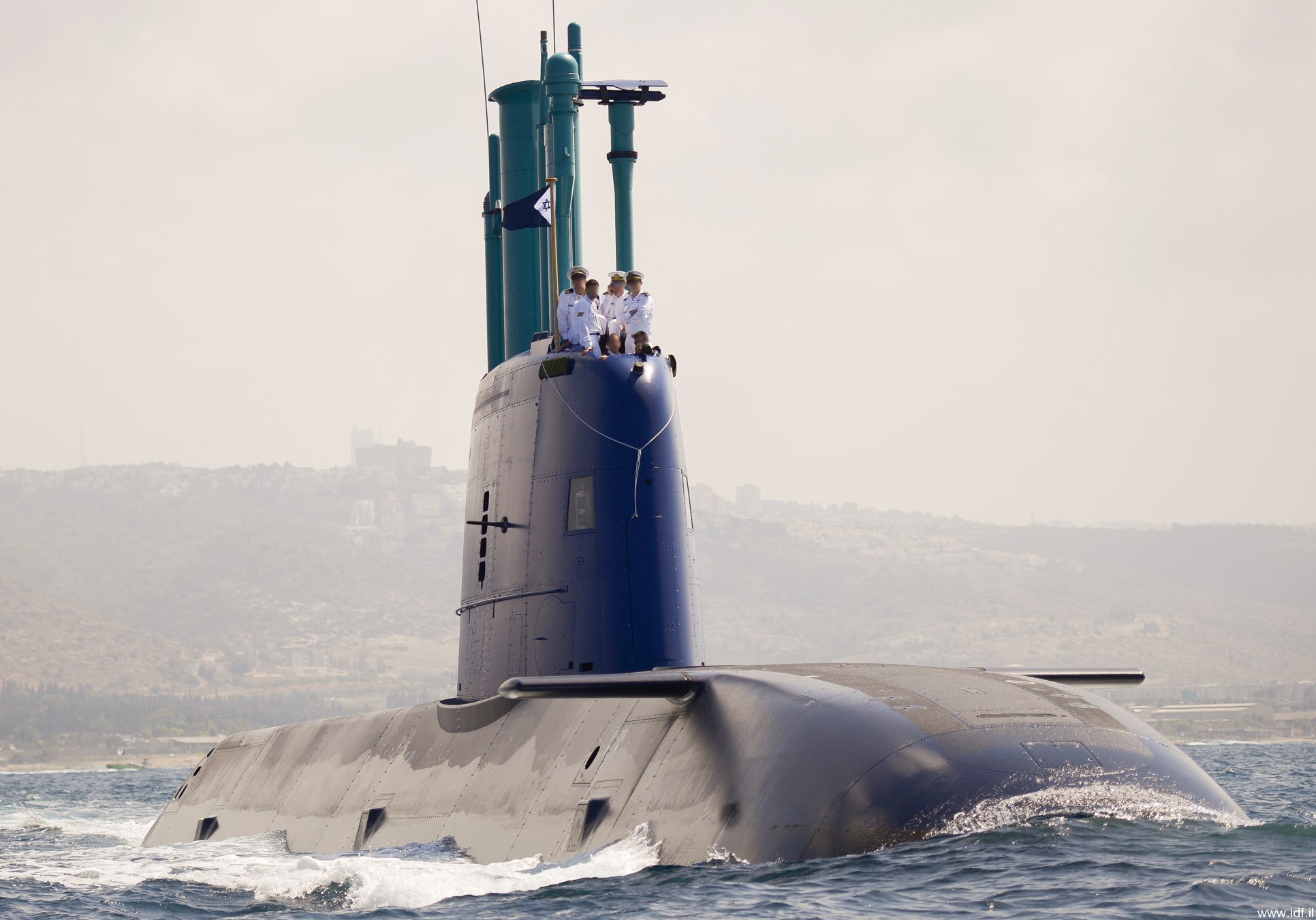 INS Tanin 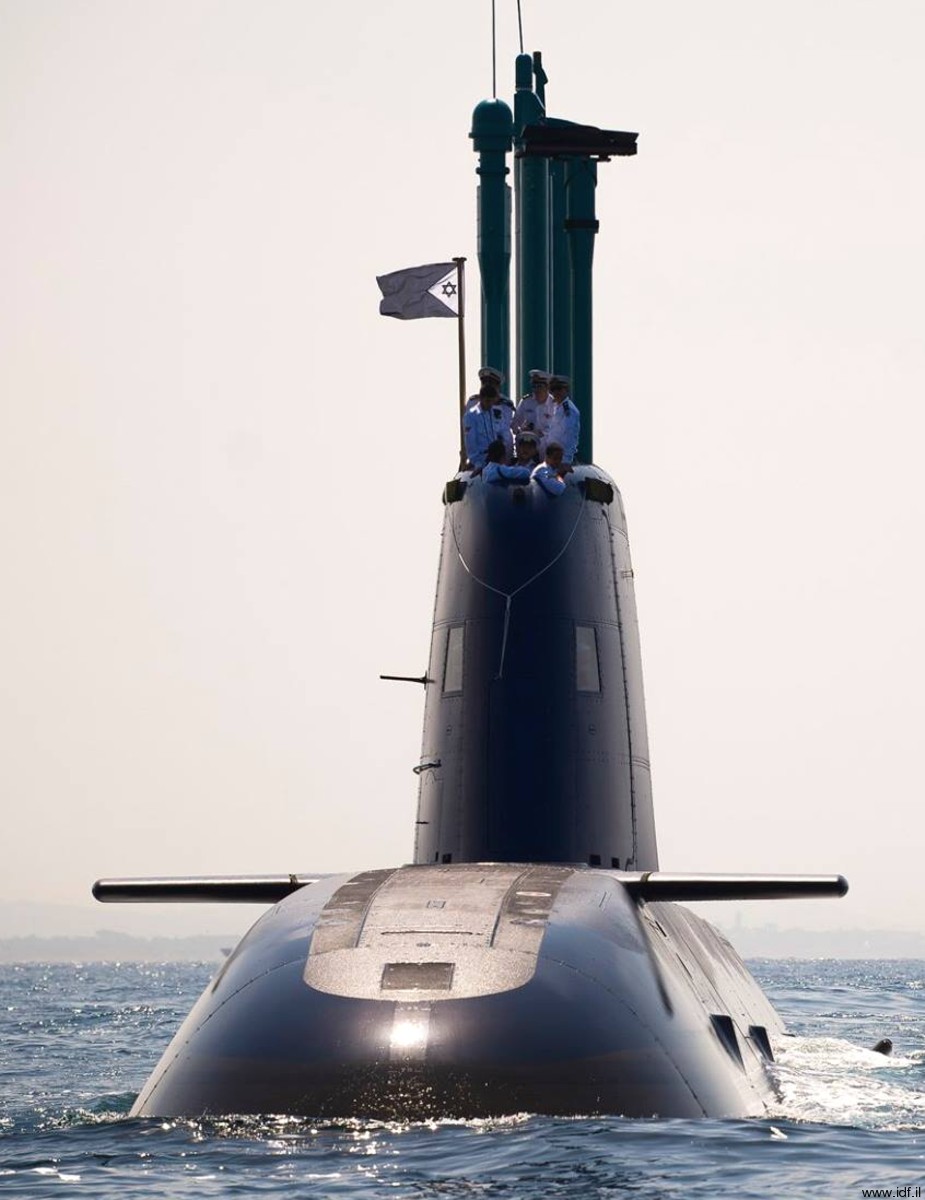 INS Tanin 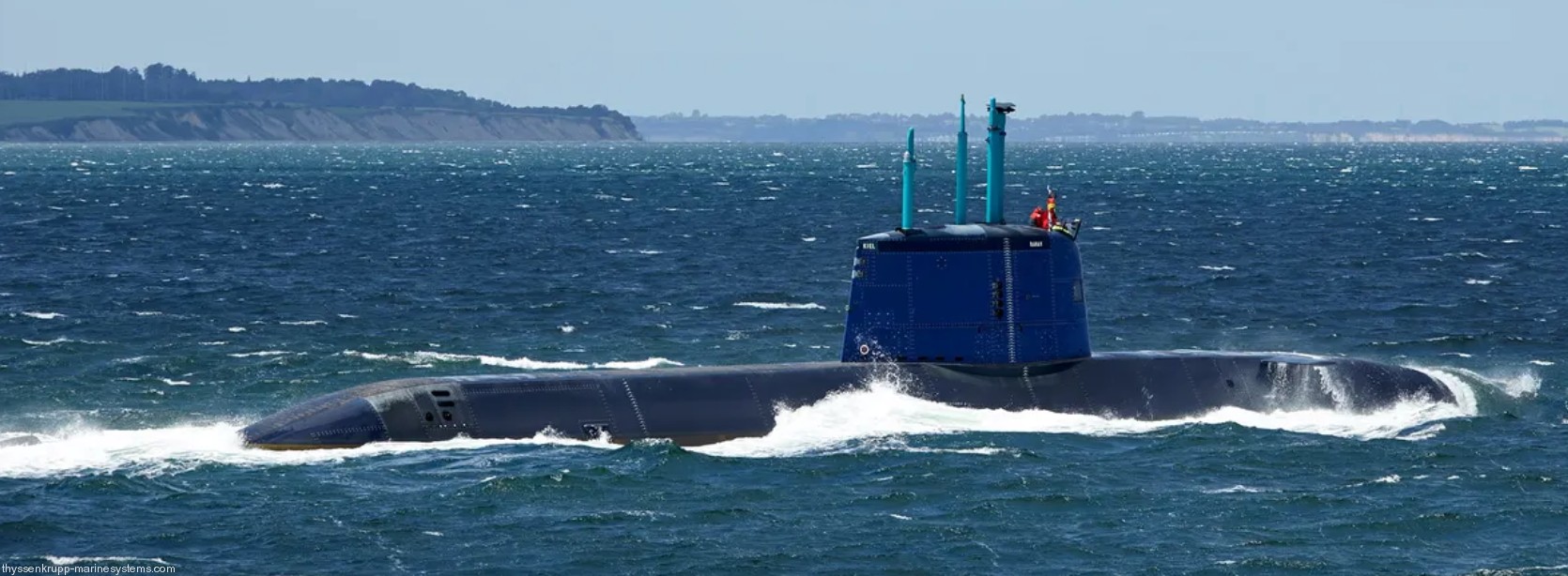 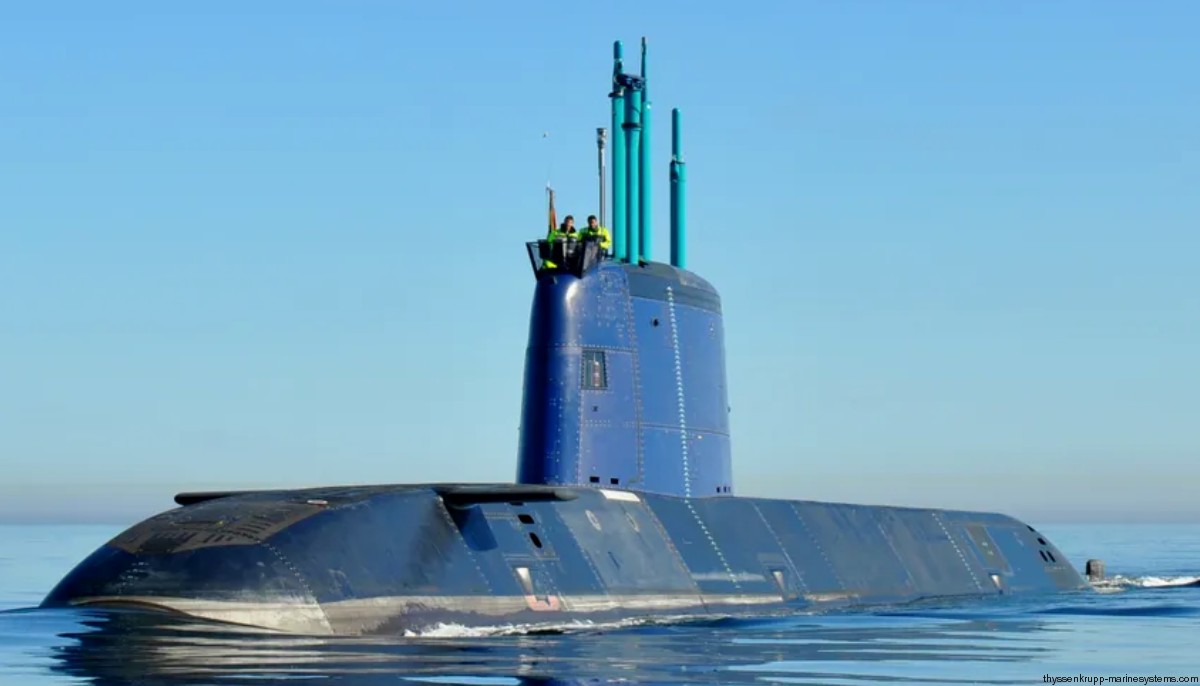  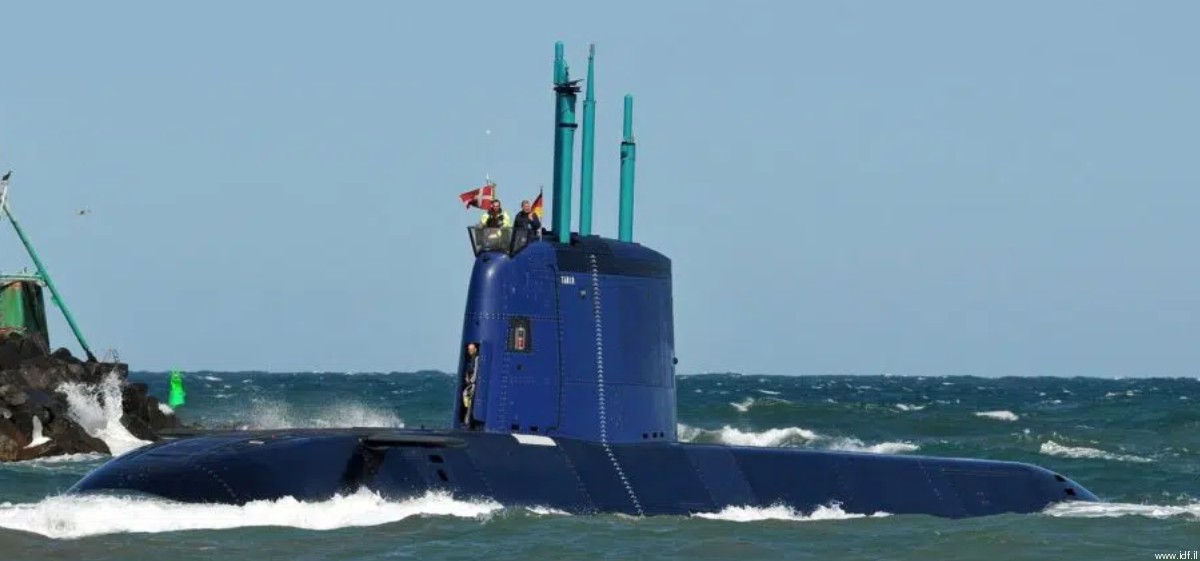 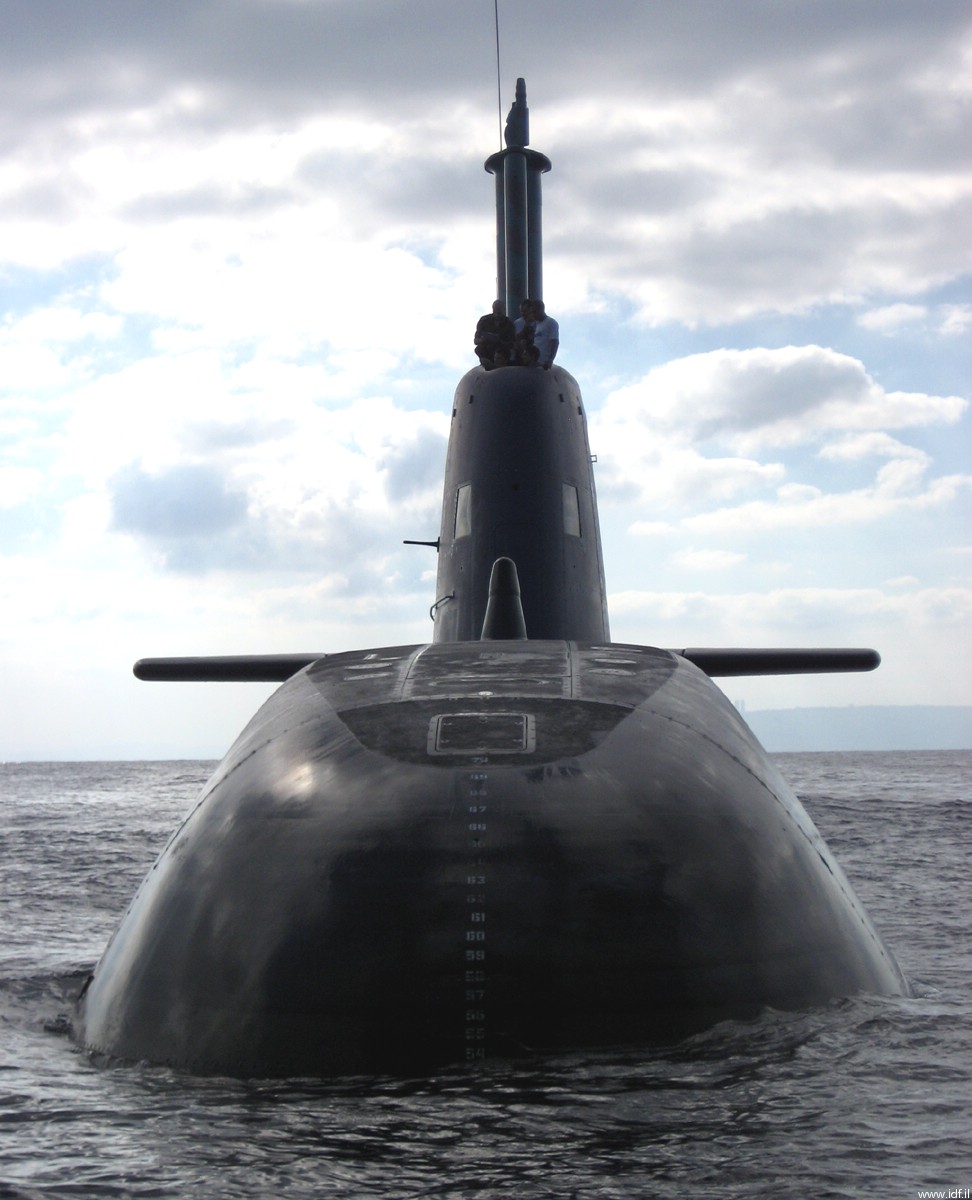 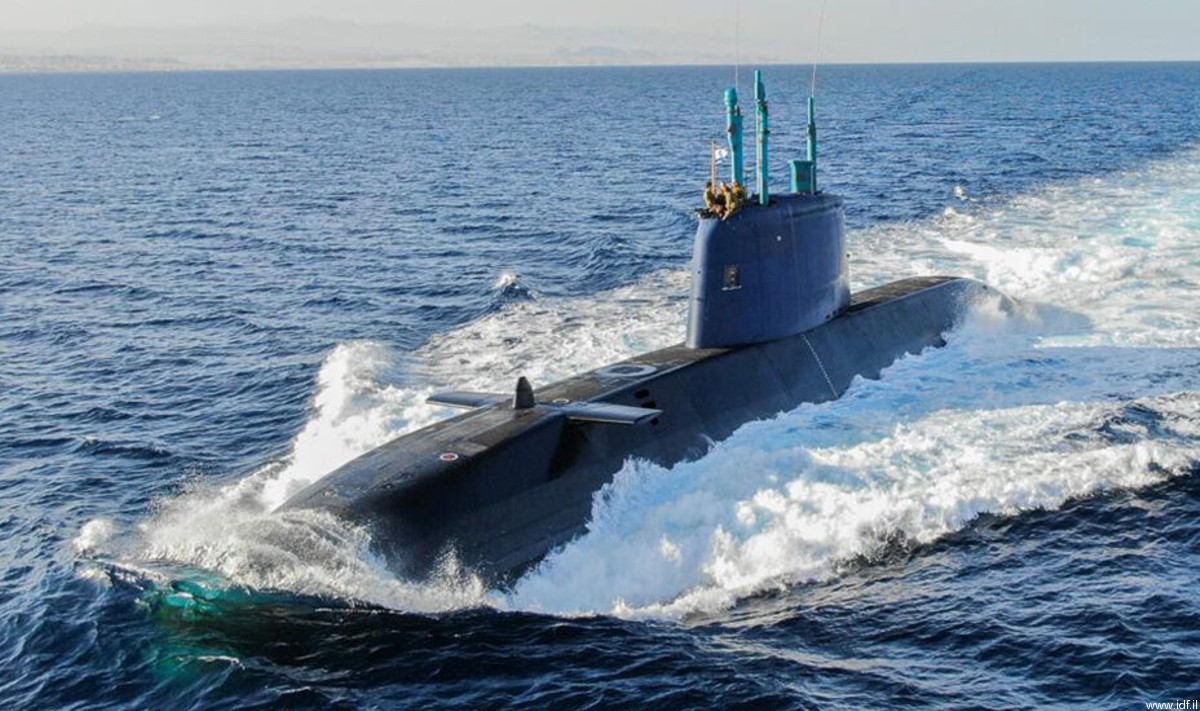 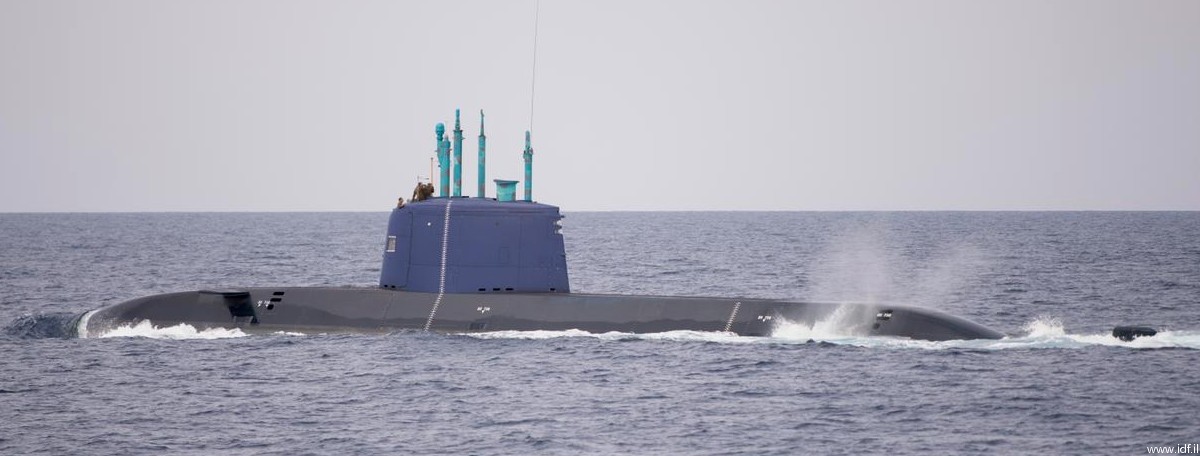 |
||||||||||||||||||||||||||||||
| | seaforces.org | Israeli Navy start page | |